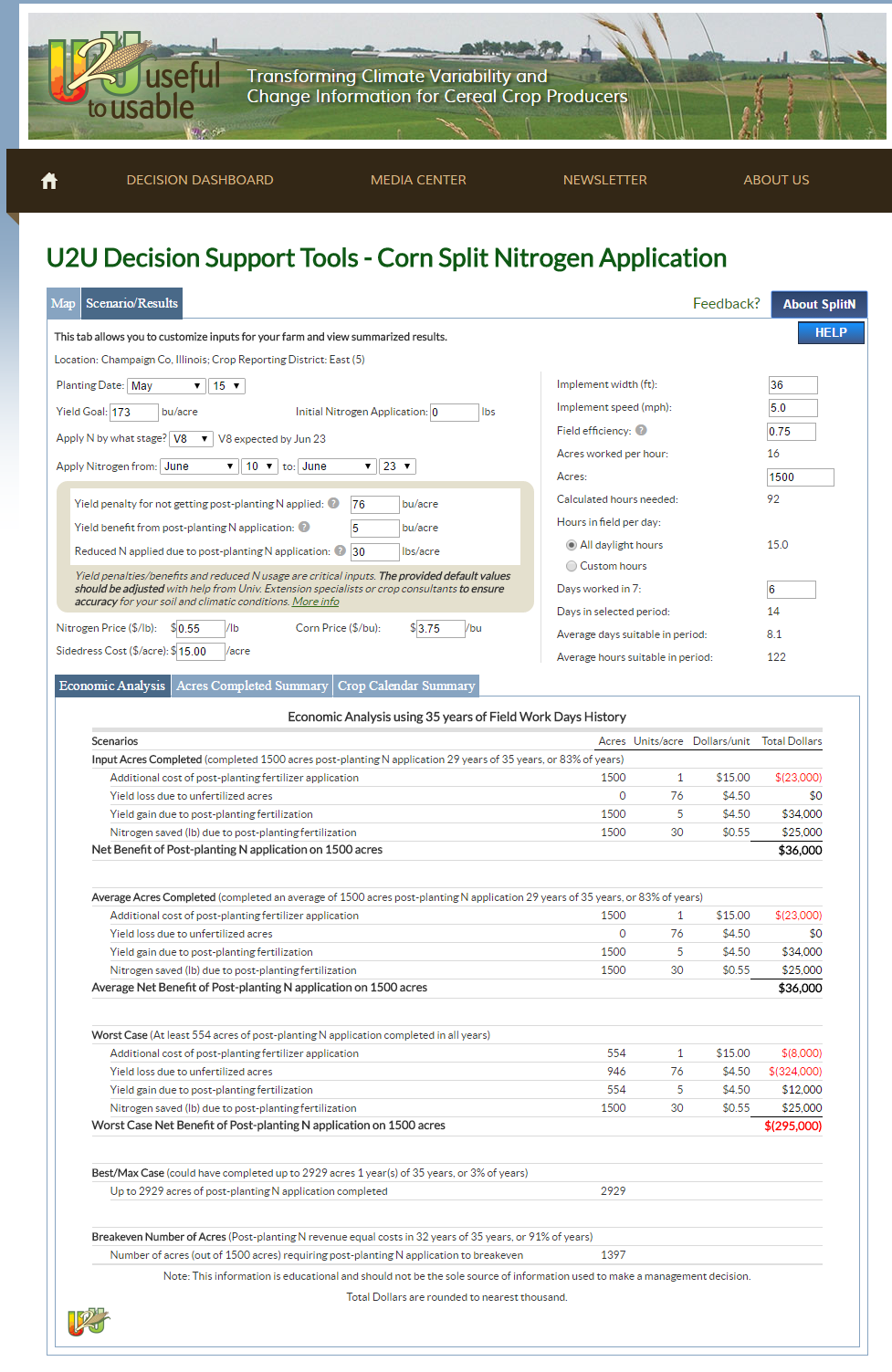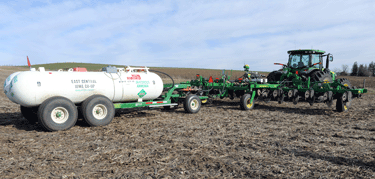The USDA-funded Useful to Usable (U2U) project has released their split Nitrogen application decision tool for corn across the Corn Belt. The Corn Split N tool combines historical weather and fieldwork data with economic considerations to determine the feasibility and profitability of completing a second (split) N application within a user-specified time period. Check it out at www.agclimate4u.org under the “decision support tools”.
Screen shot with default values for Champaign County, Illinois

The user guide can be found here.
BACKGROUND (from the web site)
Why Split Apply Nitrogen?
Farmers traditionally apply nitrogen to the soil in a single pass during either the fall or in the spring before planting. However, early nitrogen application can result in significant losses due to weather factors (e.g. warm, moist soils). Research has shown that a split application of nitrogen — one application in the fall or around the time of planting and a second application after planting when there is the greatest demand for N from the crop — can reduce total nitrogen use (savings to the farmer) and/or reduce nitrogen loss to the environment (savings to society).
There are some risks involved with a split nitrogen application strategy. Greater costs are incurred because two passes through the field are required. Additionally, the second application (if conducted using ground application equipment) may be hindered due to weather conditions. If soils are too wet during the time when a second application of nitrogen is needed, insufficient nitrogen may result in lower yields. With the Corn Split N tool farmers now have a way of quantifying the costs and benefits of post-planting nitrogen applications.
Split Nitrogen Timing and Application Methods
University recommendations suggest applying N by V6 if you do not use a starter N. If starter N is used, the post-planting application is determined by height of the corn plant and equipment used. For typical surface application equipment, application by V8 is recommended. Some surface application equipment may be able to apply N until V10. Split nitrogen application can also be conducted using aerial application. The Corn Split N tool is intended for use with surface application equipment.
Nitrogen management of corn includes many factors, one of which is the timing of application. Recommended application times vary depending on the climate and soil conditions of your location. This tool is designed to assist farmers with planned sidedressing of nitrogen.
Planned split N applications are different than rescue N applications. Rescue N is for the purpose of remedying a known problem of insufficient N in growing plants. It may occur early enough for surface application of N or so late that aerial application is the only option. Planned split N applications are done with the intention of supplying sufficient N without waiting for the crop to express a need. By that time it may be losing yield.
The Corn Split N tool helps farmers investigate the implications of planning a post-planting sidedressing of N. Research indicates that split N applications have several potential benefits. First, the total amount of N needed for optimal yield may be lessened. Fertilizer savings are most likely to be experienced where the risk of N loss is high. Second, increased yield may occur. Research results differ on whether or not yields can be increased. In some years, split N applications increase yields and in others it does not.
If a farmer plans to apply nitrogen post-planting and is unable to accomplish this due to weather or equipment problems, there is a good chance that yields will suffer. This tool estimates how often that will occur given your described equipment complement.
———————————————-
U2U Project Partners: Purdue University, Iowa State University, Michigan State University, South Dakota State University, University of Illinois, University of Michigan, University of Missouri, University of Nebraska-Lincoln, University of Wisconsin, High Plains and Midwestern NOAA Regional Climate Centers, and the National Drought Mitigation Center.
This material is based upon work supported by the National Institute for Food and Agriculture, U.S. Department of Agriculture, under award number 2011-68002-30220. Any opinions, findings, conclusions, or recommendations expressed in this publication are those of the author(s) and do not necessarily reflect the views of the U.S. Department of Agriculture.


